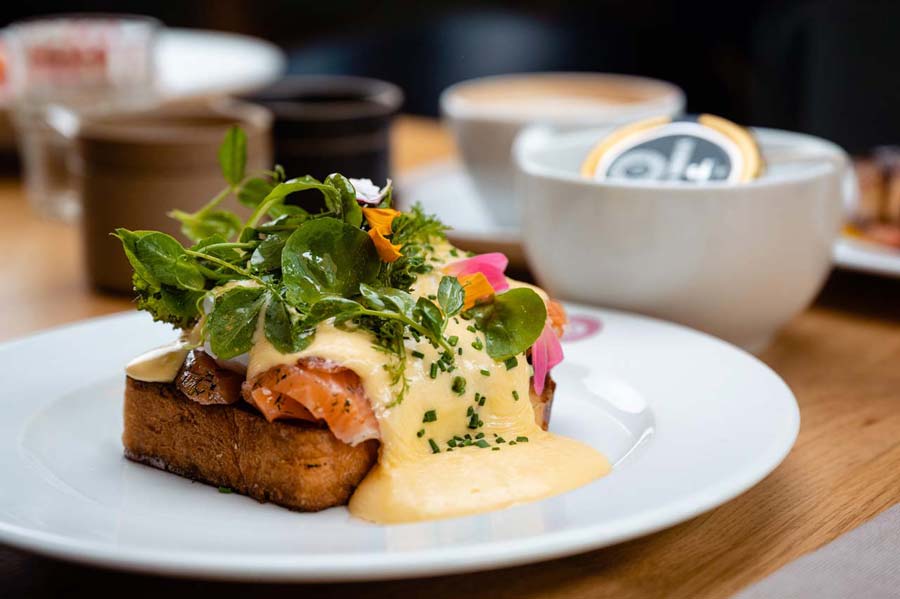Hollandaise sauce is one of the classics of French cuisine. Prepared as a basic sauce, it is also a real quick-change artist when it is flavored with various herbs, lime or orange peel to suit the respective dishes or refined with an extra portion of whipped cream. It is also often referred to simply as Hollandaise or Dutch sauce.
The ingredients
To make real Hollandaise sauce as a basic sauce, you mainly need egg yolk and butter. There are also a few spices and additives to round off the taste.
For four people (approx. 6 portions). If there are fewer or more people, adjust the quantity of ingredients accordingly:
• 250 g butter
• 3-4 egg yolks (size M)
• 1 tbsp lemon juice (freshly squeezed)
• 2 tbsp water
• Salt, ground white pepper (a pinch)
If desired, add a tablespoon of white wine vinegar or white wine.
The preparation
The preparation time is approx. 20 minutes
1. first carefully separate the fresh eggs. Place the egg yolks in a metal bowl or shallow pan and keep the egg whites in the fridge for later use.
2. melt the butter and set aside to cool.
3. whisk the egg yolks in the bowl over a hot, non-boiling water bath with a whisk or mixer until they become frothy and the mixture reaches a slightly creamy consistency.
4. now remove the bowl from the bain-marie and carefully stir in the melted butter in as small a quantity as possible.
5. finally, season the sauce to taste with salt, pepper and a few drops of lemon.
Notes
The water bath must not reach boiling temperature, as the egg yolk mixture will curdle and form flakes if the heat is too high. Hollandaise sauce is best made using fresh eggs.
Gourmets add a little white wine to the egg mixture or a reduction made from shallots, white wine and vegetable stock.
The delicious variations: Enjoy with vegetables, fish and meat
Hollandaise sauce often enhances simple dishes. It gives healthy vegetables and fish a chance to become popular dishes, even if they tend not to like them. Hollandaise sauce can be adapted to suit the dish by adding selected herbs and spices.
Hollandaise sauce is not only used to enhance vegetables during the asparagus season. It is also particularly popular with cauliflower and broccoli or fine mixed vegetables.
Tender fillet of beef or roast beef are perfectly complemented by a classic hollandaise sauce. It also enhances the flavor of somewhat dry pork fillet.
For fish dishes, such as steamed cod or sole, hollandaise sauce can be used to change the taste by adding a little fish stock and suitable herbs. Pollack and salmon love a hint of dill. Hollandaise sauce with a hint of basil makes roast zander with risotto the perfect dish for discerning fish lovers.
Hollandaise sauce for vegans
Vegans don’t have to do without hollandaise sauce. Instead of egg yolk and butter, plant-based products are used in the preparation. The alternative is quickly prepared with a classic roux made from vegan margarine, soy sauce and vegan white wine. Alternatively, the sauce can be thickened and creamy using silken tofu instead of the roux.
A lifesaver if something doesn’t turn out right
If the egg yolk mixture is stirred over a water bath that is too hot, flakes will form. In this case, quickly remove the mixture from the heat and stir in another egg yolk over the hot water bath, adding a few splashes of lemon juice. Gradually mix the curdled sauce into the freshly whisked egg yolk.
Adding butter to the egg yolk mixture too hastily can also lead to curdling. A few ice cubes, melted and stirred in with a sense of proportion, can help to smooth the mixture.
The origin of the delicacy
Although you might think that the history of hollandaise sauce began in Holland, this is a misconception. Like many other sauces, it has its origins in France, the land of culinary art.
The recipe for a “fragrant sauce”, which was served with asparagus, appeared in a cookbook by the famous chef François-Pierre de La Varenne in 1651.
Hollandaise sauce was later described in one of the oldest recipes from 1758. Hollandaise sauce was mainly prepared in Normandy, initially without eggs, but with high-quality butter. It owes its name Hollandaise sauce to the use of butter from Holland, which was already known for the high quality of its dairy products at the time.
Breakfast and brunch Berlin – your unique breakfast restaurant in Kreuzberg and Schöneberg: Frühstück 3ooo.


